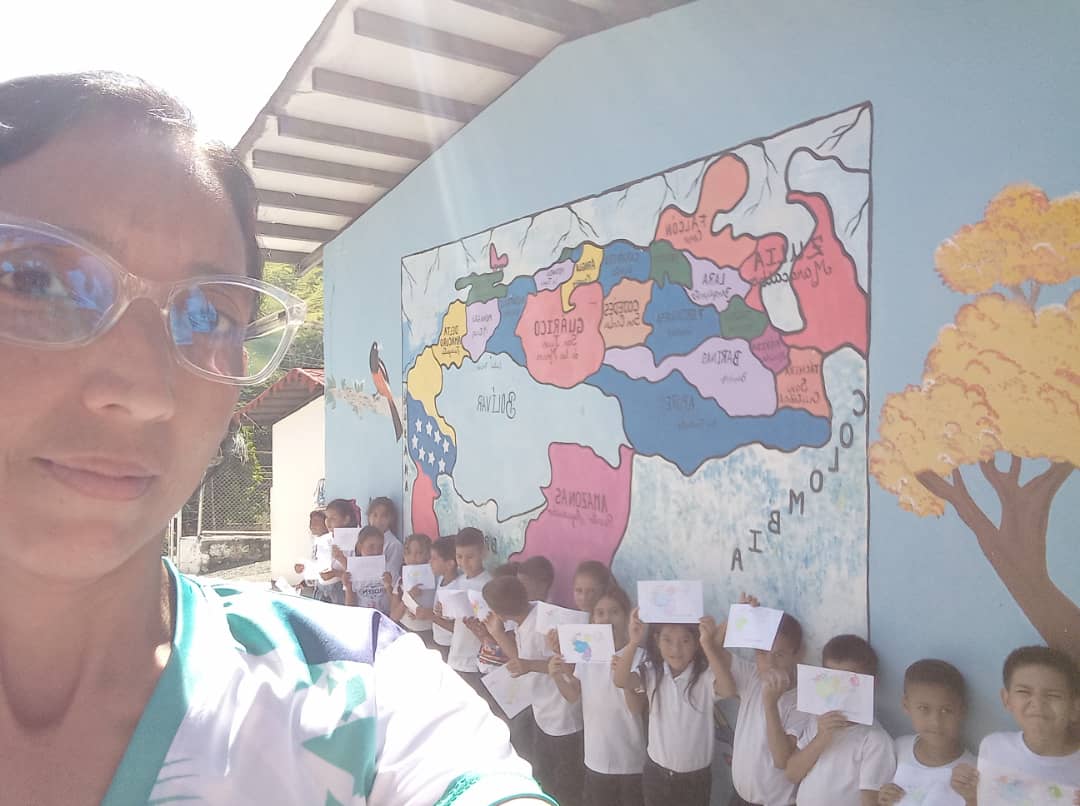
¡Saludos, comunidad de Education! Hoy quiero compartir una experiencia de aula significativa que realizamos para reconocer la importancia de los pueblos originarios de Venezuela. Como docente, siento el deber de enseñar que nuestros antepasados indígenas no son solo historia, son parte fundamental de nuestro presente. Esta actividad integró Ciencias Sociales, Lenguaje y Creatividad, con resultados que superaron las expectativas.
Áreas del Currículo Integradas:
- Área Principal: Ciencias Sociales (Geografía e Historia)
- Áreas Secundarias: Lenguaje y Comunicación, Creatividad
- Estrategia aplicada a Tercer Grado de Educación Primaria
Materiales Utilizados
- Mapa mental referente al contenido: grupos indígenas de Venezuela, estados de Venezuela en los que están ubicados
- Mapa de Venezuela impreso para cada estudiante.
- Crayones y lápices de colores
Desarrollo de la Actividad:
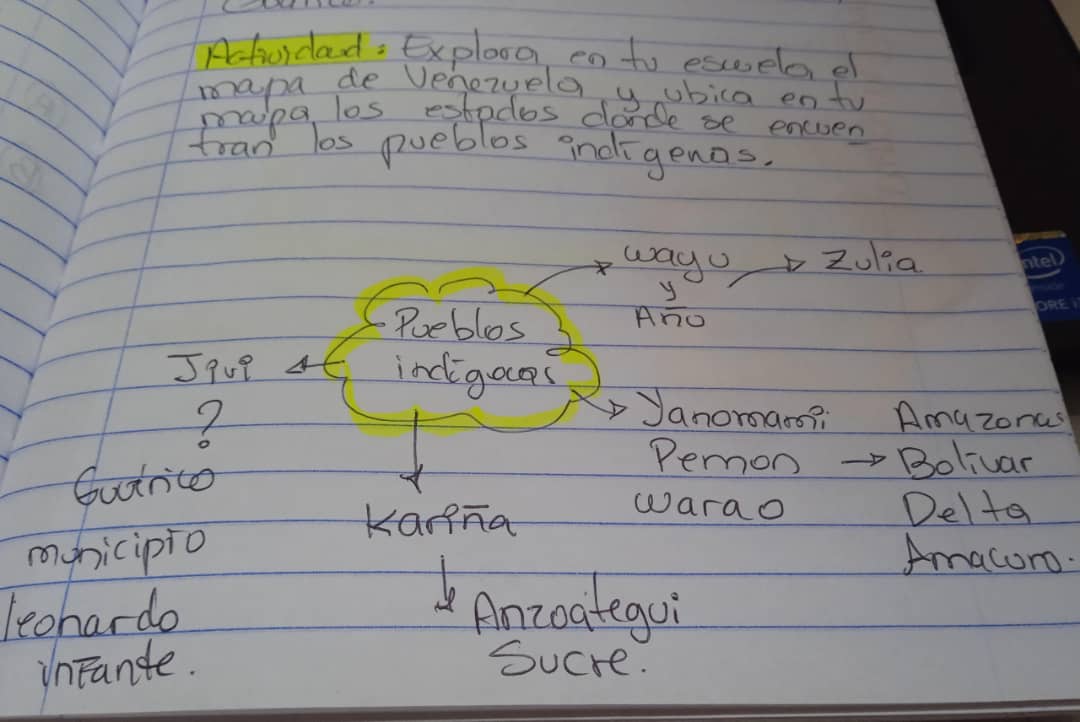
Comencé la clase mostrando un mapa mental donde ubicaba visualmente las diferentes etnias indígenas que aún conservan sus tradiciones en Venezuela. La magia del mapa mental fue que nos permitió identificar rápidamente que, básicamente, en 7 estados de Venezuela se concentran los principales grupos indígenas actuales: Zulia, Amazonas, Bolívar, Delta Amacuro, Anzoátegui, Monagas y Sucre. Esta simplificación visual fue clave para el éxito de la actividad.
Enfoque en Lenguaje y Comunicación
Mientras escribía cada etnia en la pizarra (Wayuu, Warao, Pemón, Kariña, Jivi, entre otros) hice hincapié en deletrear cada nombre y pedirles que formaran el sonido en voz alta. Para niños en proceso silábico de lectura, esta práctica fue crucial. Primero formaban el sonido letra por letra y luego leían la palabra completa, ampliando su vocabulario y conciencia fonológica.
El Gran Descubrimiento del Mapa de la Escuela
Antes de pasar a la actividad práctica, hice una pregunta reveladora:
¿En qué lugar de nuestro colegio está pintado en grande nuestro mapa de Venezuela?
La mayoría no lo sabía, a pesar de pasar diariamente por la entrada principal donde tenemos un colorido mapa de Venezuela pintado en toda una pared. ¡Solo un estudiante hizo la conexión después de 10 minutos de reflexión! Este momento nos enseñó la importancia de observar nuestro entorno.
Actividad Práctica - Ubicación y Demarcación
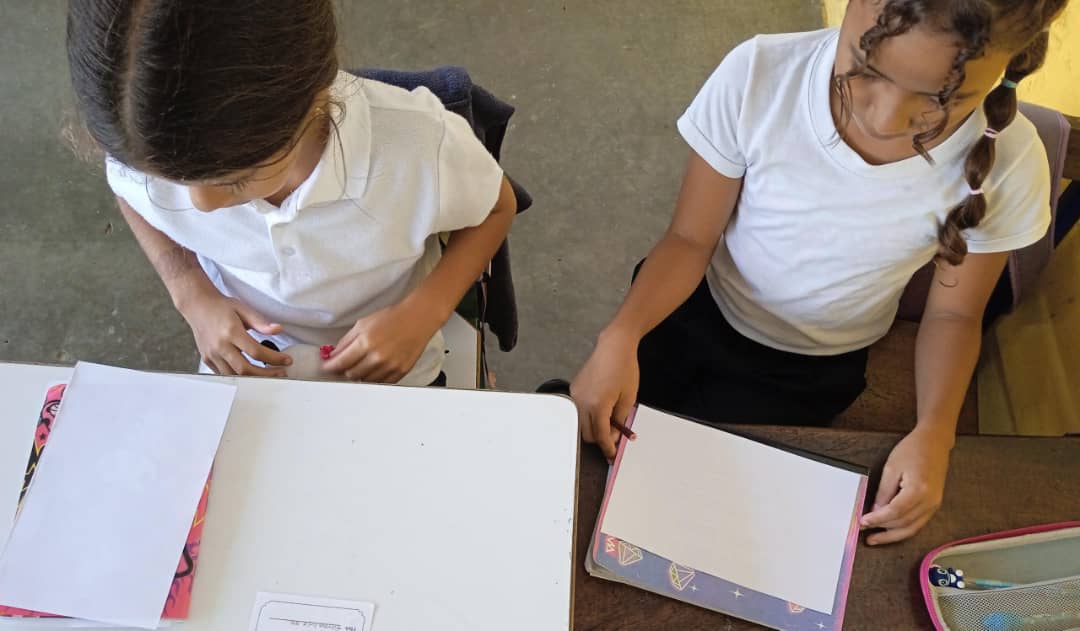
Gracias al mapa mental, cuando fuimos a ver el gran mapa pintado en la pared de la entrada de la escuela, a los niños les fue mucho más fácil ubicar los 7 estados clave.
La actividad en sus mapas impresos consistió en:
- Demarcar y colorear solo esos 7 estados.
- Escribir los nombres de las etnias correspondientes.
- Al tener un objetivo concreto y delimitado, la tarea fue menos abrumadora y más exitosa.
La Tarea Más Importante - Ser Embajadores del Conocimiento
La actividad para el hogar era clara; lleguen a casa y cuéntenles a sus representantes que en estos 7 estados del país están nuestros principales grupos indígenas. Esto tiene un propósito pedagógico, les estoy creando la responsabilidad de escuchar y prestar la debida atención en el aula. La idea es que sean ellos quienes, al llegar a casa, puedan contar algo nuevo a sus padres, abuelos y hermanos, liberando a los representantes de la responsabilidad entera de descifrar qué aprendieron sus niños en la escuela. ¡Ellos se convirtieron en los expertos!
En la actividad logré varios objetivos simultáneamente:
- Los estudiantes aprendieron geografía de manera significativa y concreta.
- Ampliaron su vocabulario y habilidades de lectoescritura.
- Tomaron conciencia de la diversidad cultural venezolana.
- Desarrollaron responsabilidad y capacidad de síntesis para transmitir conocimiento.
- Se fortaleció su autoestima al convertirse en Profesores en sus hogares.
Fue especialmente revelador cuando varios estudiantes comentaron sorprendidos que no sabían que todavía existían indígenas en Venezuela. Este tipo de actividades rompe estereotipos y construye una identidad nacional más inclusiva.
¿Has realizado actividades similares en tu aula? ¿Cómo fomentas que tus estudiantes lleven el aprendizaje a sus hogares?
Gracais por leerme hasta el final.
Imágenes de mi propiedad. Tomadas con mi Redmi10A

English Version
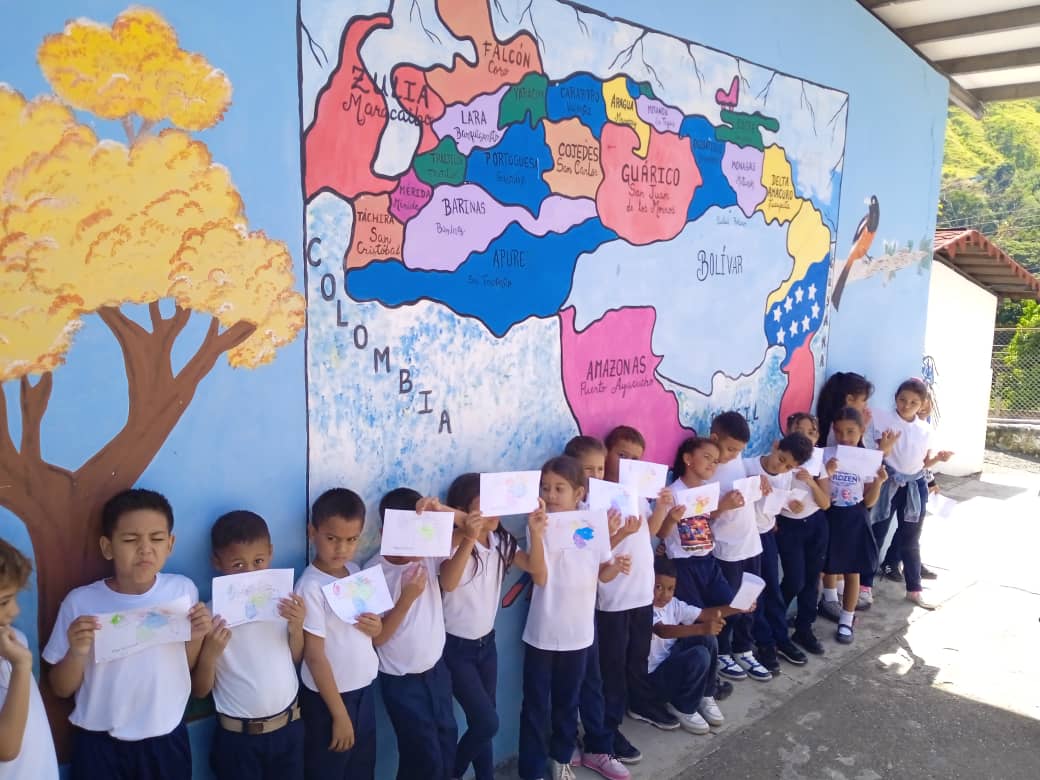
Greetings, Education community! Today I want to share a meaningful classroom experience we conducted to recognize the importance of the indigenous peoples of Venezuela. As a teacher, I feel a duty to teach that our indigenous ancestors are not just history, they are a fundamental part of our present. This activity integrated Social Studies, Language, and Creativity, with results that exceeded expectations.
Curriculum Areas Integrated:
- Main Area: Social Studies (Geography and History)
- Secondary Areas: Language and Communication, Creativity
- Strategy applied to Third Grade of Primary Education
Materials Used
- Mind map referring to the content: indigenous groups of Venezuela, states of Venezuela in which they are located
- Map of Venezuela printed for each student
- Crayons and colored pencils
Activity Development:
I began the class by showing a mind map that visually located the different indigenous ethnic groups that still preserve their traditions in Venezuela. The magic of the mind map was that it allowed us to quickly identify that the main current indigenous groups are concentrated in seven Venezuelan states: Zulia, Amazonas, Bolívar, Delta Amacuro, Anzoátegui, Monagas, and Sucre. This visual simplification was key to the success of the activity.
Focus on Language and Communication
While I wrote each ethnic group on the board (Wayuu, Warao, Pemón, Kariña, Jivi, among others), I emphasized spelling each name and asking them to form the sound aloud. For children in the syllabic reading process, this practice was crucial. First, they formed the sound letter by letter and then read the entire word, expanding their vocabulary and phonological awareness.
The Great Discovery of the School Map
Before moving on to the practical activity, I asked a revealing question:
Where in our school is our large map of Venezuela painted?
Most of them didn't know this, despite passing by the main entrance every day, where we have a colorful map of Venezuela painted on an entire wall. Only one student made the connection after 10 minutes of reflection! This moment taught us the importance of observing our surroundings.
Practical Activity - Location and Demarcation
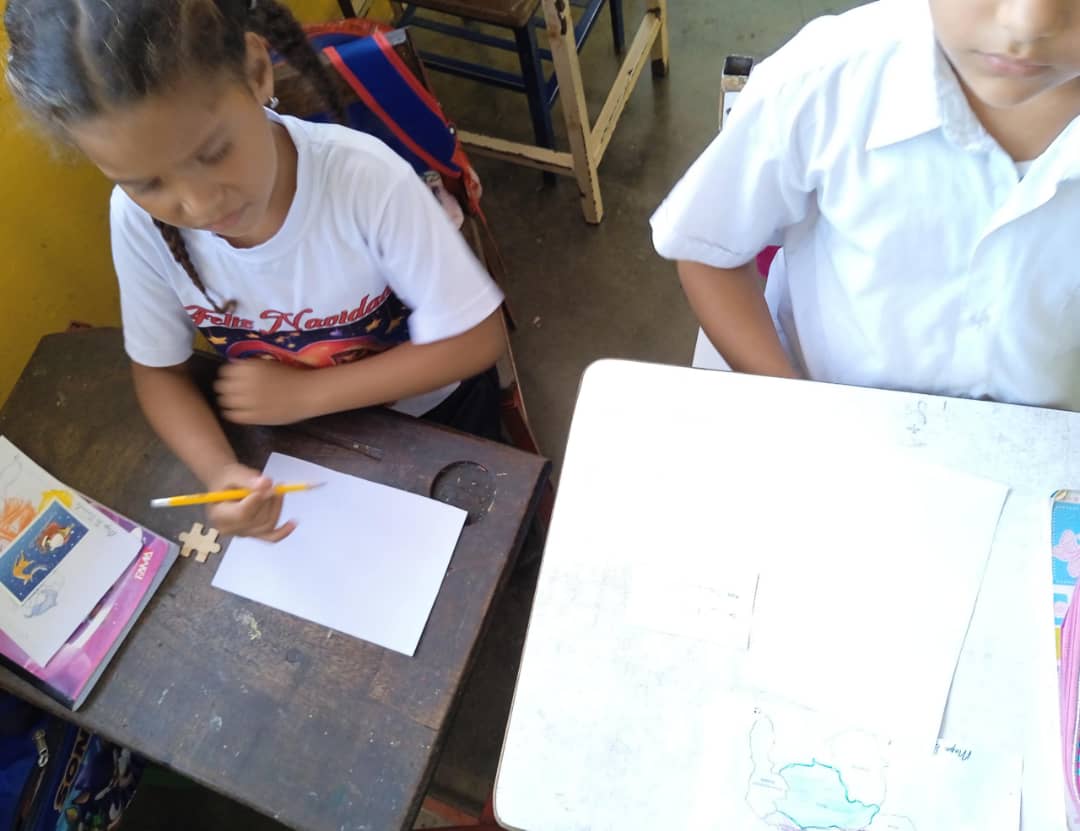
Thanks to the mind map, when we went to see the large map painted on the wall at the school entrance, the children found it much easier to locate the 7 key states.
The activity on their printed maps consisted of:
- Mark and color only those 7 states.
- Write the names of the corresponding ethnic groups.
- Having a concrete and defined objective made the task less overwhelming and more successful.
The Most Important Task - Be Ambassadors of Knowledge
The home activity was clear: go home and tell your representatives that these 7 states are home to our main indigenous groups. This has a pedagogical purpose; I am creating in them the responsibility to listen and pay due attention in the classroom. The idea is that they, when they get home, can tell their parents, grandparents, and siblings something new, freeing the representatives from the sole responsibility of deciphering what their children learned in school. They became the experts!
In this activity, I achieved several objectives simultaneously:
- The students learned geography in a meaningful and concrete way.
- They expanded their vocabulary and literacy skills.
- They became aware of Venezuelan cultural diversity.
- They developed responsibility and the ability to summarize to transmit knowledge.
- Their self-esteem was strengthened by becoming teachers in their homes.
It was especially revealing when several students commented, surprised, that they hadn't known Indigenous people still existed in Venezuela. These types of activities break stereotypes and build a more inclusive national identity.
Have you conducted similar activities in your classroom? How do you encourage your students to take this learning home?
Thank you for reading until the end.
Images my own. Taken with my Redmi 10A